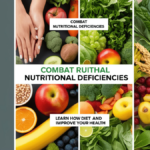how can we make prison food healthy again: A Path to Healthier Meals
Prison reform discussions often overlook a critical component: nutrition. The quality of prison food significantly impacts inmate health, behavior, and rehabilitation prospects. Improving prison food isn’t just about better meals—it’s a pivotal step towards reducing recidivism, lowering healthcare costs, and fostering a more rehabilitative environment. This post explores the importance of making prison food healthy again and how we can achieve it.
The Current State of Prison Food (how can we make prison food healthy again)
Understanding Typical Prison Meals
The typical prison meal is designed with cost efficiency in mind, often leading to a diet high in processed foods, refined carbohydrates, and unhealthy fats. Inmates frequently receive meals that are calorie-dense but lack essential nutrients, contributing to poor overall health. Common items on the menu include white bread, processed meats, and sugary snacks, with minimal servings of fruits, vegetables, and whole grains.
Nutritional Deficiencies and Their Impact
These meals often fall short of providing essential nutrients like vitamins A, C, D, calcium, and omega-3 fatty acids. The absence of these crucial nutrients can lead to a range of health problems, including weakened immune systems, bone density loss, and cognitive impairments. The lack of fresh produce further exacerbates these issues, making inmates more susceptible to chronic diseases like diabetes and heart disease.
Consequences on Inmate Health and Behavior
The effects of poor nutrition extend beyond physical health. Malnutrition is closely linked to increased aggression, anxiety, and depression among inmates. This can create a more volatile prison environment, making it harder to maintain order and support rehabilitation efforts. Additionally, the prevalence of diet-related illnesses among inmates puts a significant strain on prison healthcare systems, driving up costs and leading to poorer health outcomes.
Challenges in Improving Prison Nutrition
Budgetary Constraints
One of the most significant challenges in improving prison nutrition is the limited budget allocated for food services. Many prisons operate under tight financial constraints, which often lead to cost-cutting measures in meal preparation. This prioritization of cost over quality results in meals that are cheap to produce but lacking in nutritional value.
Logistical and Sourcing Issues
The logistics of providing food for large inmate populations can also be challenging, especially in prisons located in remote areas. These facilities may struggle to source fresh produce and other perishable items, relying instead on processed foods that have a longer shelf life. Additionally, the centralized procurement process often favors large suppliers that provide bulk quantities of low-cost, nutritionally poor food.
Staffing and Training Gaps
Meals in prisons are often prepared by inmates under the supervision of a small number of trained staff. While this arrangement can provide valuable work experience for inmates, it also presents challenges in maintaining consistent meal quality and nutritional standards. Many kitchen staff members receive minimal training in nutrition, focusing instead on basic food safety and preparation techniques. This lack of expertise can lead to meals that are nutritionally inadequate.
The Hidden Costs of Poor Nutrition
Increased Healthcare Costs
The poor nutrition provided in prisons contributes to a range of health problems, leading to increased healthcare costs for the prison system. Treating conditions like diabetes, heart disease, and mental health disorders is expensive and can strain the limited resources available in prison healthcare facilities. Additionally, these health issues often persist after inmates are released, placing an additional burden on public healthcare systems.
The Impact on Rehabilitation and Recidivism
Nutrition plays a vital role in the rehabilitation process. A healthy diet can improve cognitive function, mood, and overall well-being, making it easier for inmates to participate in educational and therapeutic programs. Conversely, poor nutrition can lead to fatigue, irritability, and a lack of motivation, all of which can hinder rehabilitation efforts. Inmates who leave prison in poor health are more likely to re-offend, perpetuating the cycle of incarceration.
Steps Towards Healthier Prison Meals
Redesigning Menus
Improving the nutritional quality of prison meals doesn’t necessarily require a significant increase in costs. By incorporating more whole grains, legumes, and seasonal vegetables, prisons can provide healthier meals while staying within budget. Simple changes, such as replacing white bread with whole grain options or offering more fresh fruits and vegetables, can have a substantial impact on the overall diet of inmates.
Training and Empowering Kitchen Staff
Investing in the training of kitchen staff and inmate workers is crucial to improving prison nutrition. Providing education on nutrition and healthy meal preparation can help ensure that meals are both nutritious and appealing. Additionally, involving inmates in the meal planning process can foster a sense of responsibility and ownership, which can have positive effects on behavior and rehabilitation.
Collaborating with Local Farmers and Suppliers
Prisons can enhance the quality of their meals by partnering with local farmers and food suppliers. This approach not only supports the local economy but also ensures a steady supply of fresh, nutritious ingredients. Programs that allow inmates to participate in gardening or farming can also be beneficial, providing fresh produce for the prison while teaching valuable skills and promoting healthy eating habits.











